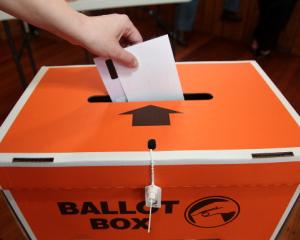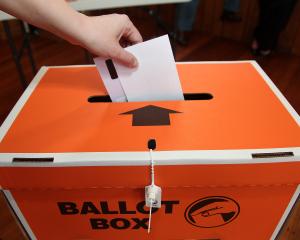
The Dunedin City Council has started looking at "high level" options for significant investment in South Dunedin’s stormwater infrastructure.
The options will probably be presented next year to newly-elected councillors, who will face tough decisions about how much the council should spend on upgrades and what level of service is required in the wake of the devastating June 2015 flood.
Council water and waste group manager Laura McElhone said in a report tabled at yesterday’s infrastructure services committee meeting the options, if the council voted for a change from the status quo, would require extra funding or a reallocation of funds through the annual plan process as the work was not budgeted for.
Speaking to the Otago Daily Times, she declined to speculate on how much the options might cost given the work had just begun, saying only they would require "significant investment".
At a council meeting in May, Dr McElhone estimated upgrading the entire city’s stormwater network so it could withstand a one-in-10-year storm event could cost hundreds of millions, if not more than a billion dollars.
Dr McElhone said yesterday the worst parts of the South Dunedin network flooded in a one-in-two-year storm event.
Work on "high level" options for improvement started a few weeks ago and would incorporate updated models about how the network performs in significant rain events.
This included modelling of water flowing into South Dunedin from other areas, which was "quite significant" during the 2015 flood.
The present management plan for South Dunedin did not include this as a factor despite it being flagged as an issue when the plan was developed between 2010 and 2012.
Dr McElhone admitted this probably meant the models underestimated the level of flooding there would be in greater than in one-in-50-year rain events, like the 2015 flood, when water flowing from other areas became an issue.
Even if the modelling had been done before the 2015 flood it would not have resulted in increased spending on infrastructure as the council’s focus had been on areas which flooded frequently in much smaller events.
"We were trying to deal with those higher-frequency, lower-impact issues, which we are still continuing to do."
The June 2015 flood had resulted in a "slightly different focus" when it came to the network’s performance during significant events.
Staff were working to provide councillors with full information so they could make decisions about whether a change in strategy and more investment was needed.
"Ultimately, the politicians will have to make the call as to how much money they want to allocate and where they want to allocate it."
Comments
Now, Council has tabled what critics have been demanding: massive spending on storm water infrastructure. That's it, no mention of climate change. Fair minded people, while acknowledging the plan comes at election time, know it cannot be criticised as 'wrong'. Ratepayers can contribute to the debate by stating, one way or the other, whether they want Rates funds spent on South Dunedin, rather than using The Flat as a Rap to pin on Council. Don't you think? Also, very nice if property owners on The Hill were to check conduits for wear or breakage.












